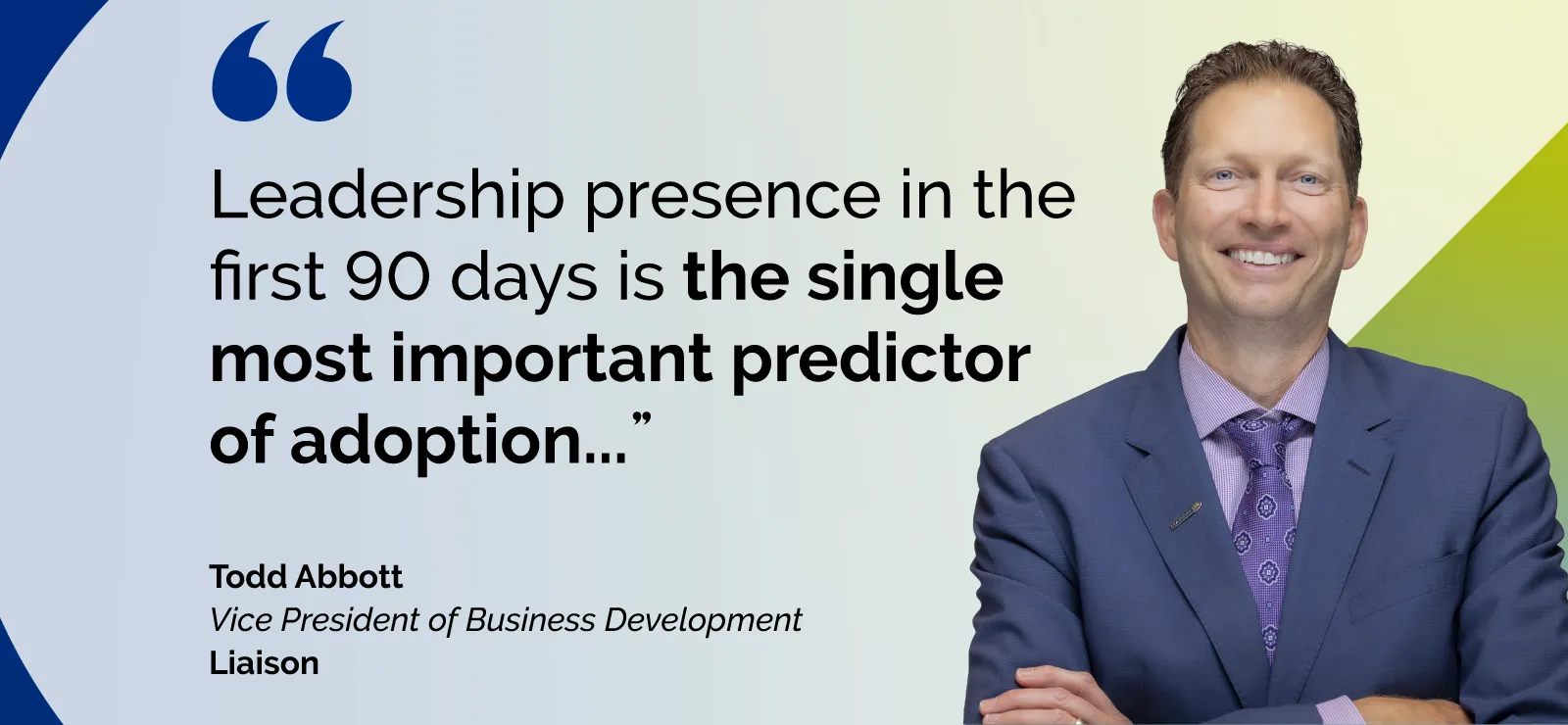Why The First 90 Days Determine ROI In Any Business Transformation

Leaders who invest in training, feedback, and communication signal that staff and students are partners in change, not just end users.
The early days of any major change feel deceptively quiet. New platforms go live, strategies are unveiled, and teams wait for signs of what the future will look like. Beneath the surface, however, the first 90 days of a transformation are where momentum is either built or lost. Whether in higher education or corporate environments, leaders who treat this period as a decisive test of credibility set their organizations up for lasting results. Those who assume adoption will naturally follow risk stalling progress before it truly begins.
Transformation initiatives — from enrollment system rollouts to digital strategy shifts — rarely fail because of technology alone. They falter because leadership underestimates how much trust, communication, and early wins matter in shaping long-term return on investment. Todd Abbott, Vice President of Business Development at Liaison, works with institutions navigating these high-stakes changes. He emphasizes that “leadership presence in the first 90 days is the single most important predictor of adoption,” because it signals that transformation is not optional. His perspective underscores a reality many executives know but too few act on: People, not platforms, determine ROI.
So what exactly should leaders focus on in those critical 90 days? Three strategies stand out: Building momentum early, leading with a human-centered approach, and treating onboarding as the hidden driver of long-term results.
Momentum in the First 90 Days Matters More Than Features
Executives often fixate on the technical details of a new system or initiative, believing that once features are deployed, value will follow. Employees and stakeholders, however, aren’t watching the technology as closely as they are watching for signs of momentum. Early wins — whether that means smoother processes, faster approvals, or clearer communication — often signal that the change is delivering tangible benefits.
When momentum is missing, hesitation fills the gap. Skepticism grows, and adoption slows as individuals begin to view the transformation as optional. “Institutions often underestimate the cultural side of transformation, assuming adoption will follow a technical launch,” Abbott notes. That assumption creates space for resistance to take hold, eroding trust before leaders have a chance to build it.
The lesson is clear: The first three months of any rollout should prioritize visible progress over technical perfection. Executives who celebrate small successes, highlight early adopters, and reinforce the non-negotiable nature of change establish credibility that sustains engagement long after the launch window has closed.
Adoption Fails Without Human-Centered Leadership
No matter how advanced the system, technology alone cannot carry a transformation. The organizations that succeed are those where leaders understand the human side of adoption — how people feel, learn, and respond in moments of uncertainty. Leaders who invest in training, feedback, and communication signal that staff and students are partners in change, not just end users.
Abbott has seen the difference leadership behavior makes firsthand. “When presidents actively participate — setting expectations, reinforcing priorities, and celebrating early adopters — they demonstrate that change is non-negotiable,” he explains. This visibility builds trust and makes transformation part of the institution’s identity, rather than just a passing project. In higher education especially, where morale and alignment are as critical as financial ROI, leadership presence in the rollout phase becomes a major decisive factor.
Human-centered leadership also means listening before acting. Structured forums where staff and students can voice concerns can build credibility, while empowering faculty or student champions creates peer-driven momentum. Quick wins such as reducing administrative friction or simplifying processes show that the transformation improves daily experiences, building buy-in that can’t be mandated from the top down.
Onboarding Is the Hidden Driver of ROI
Even with strong momentum and visible leadership, the mechanics of onboarding often determine whether adoption sticks. Institutions and companies alike underestimate how much structured onboarding in the first 90 days predicts long-term success. Without it, employees and students struggle with fragmented information, platform fatigue, and waning engagement.
“Clear communication, visible leadership, and tangible early wins create momentum that compounds over time,” Abbott advises. This philosophy is why organizations working with Liaison emphasize not just technical rollout, but also the onboarding structures that sustain it. In higher education enrollment systems, for example, leaders who establish milestones, provide hands-on training, and build feedback loops prevent disengagement before it begins.
Done well, onboarding transforms new systems from abstract investments into indispensable tools. It turns features into daily habits and aligns teams around shared practices that unlock ROI. Leaders who treat onboarding as more than a technical checklist and instead as a cultural bridge are the ones who tend to avoid wasted investments and build durable engagement that pays dividends long after the initial rollout.
Leading Through the Critical Window
Every transformation comes with uncertainty, but the first 90 days offer clarity if leaders know where to look. Momentum signals credibility, human-centered leadership inspires trust, and structured onboarding assures staying power. These are leadership imperatives.
For Abbott, the advice is simple but profound: “View the first 90 days as a trust-building mandate, not a technical project.” Leaders who treat this period as an opportunity to establish alignment, celebrate progress, and embed new habits set their organizations on a trajectory toward lasting ROI. Those who miss it may find themselves spending years trying to regain momentum they never built.
This article was originally published in Forbes on September 7, 2025.












